- Home
- Features
- Movies/Media
- Collectibles
- Comics/Books
-
Databases
-
Figure Database
>
-
X-Plus Toho/Daiei/Other
>
- X-Plus 30 cm Godzilla/Toho Part One
- X-Plus 30 cm Godzilla/Toho Part Two
- X-Plus Large Monster Series Godzilla/Toho Part One
- X-Plus Large Monster Series Godzilla/Toho Part Two
- X-Plus Godzilla/Toho Pre-2007
- X-Plus Godzilla/Toho Gigantic Series
- X-Plus Daiei/Pacific Rim/Other
- X-Plus Daiei/Other Pre-2009
- X-Plus Toho/Daiei DefoReal/More Part One
- X-Plus Toho/Daiei DefoReal/More Part Two
- X-Plus Godzilla/Toho Other Figure Lines
- X-Plus Classic Creatures & More
- Star Ace/X-Plus Classic Creatures & More
-
X-Plus Ultraman
>
- X-Plus Ultraman Pre-2012 Part One
- X-Plus Ultraman Pre-2012 Part Two
- X-Plus Ultraman 2012 - 2013
- X-Plus Ultraman 2014 - 2015
- X-Plus Ultraman 2016 - 2017
- X-Plus Ultraman 2018 - 2019
- X-Plus Ultraman 2020 - 2021
- X-Plus Ultraman 2022 - 2023
- X-Plus Ultraman Gigantics/DefoReals
- X-Plus Ultraman RMC
- X-Plus Ultraman RMC Plus
- X-Plus Ultraman Other Figure Lines
- X-Plus Tokusatsu
- Bandai/Tamashii >
- Banpresto
- NECA >
- Medicom Toys >
- Kaiyodo/Revoltech
- Diamond Select Toys
- Funko/Jakks/Others
- Playmates Toys
- Art Spirits
- Mezco Toyz
-
X-Plus Toho/Daiei/Other
>
- Movie Database >
- Comic/Book Database >
-
Figure Database
>
- Marketplace
- Kaiju Addicts
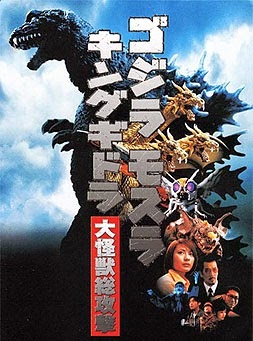 Godzilla, Mothra and King Ghidorah: Giant Monsters All-Out Attack (ゴジラ・モスラ・キングギドラ 大怪獣総攻撃 Gojira, Mosura, Kingu Gidora: Daikaijū Sōkōgeki) is a 2001 science fiction kaiju film directed by Shūsuke Kaneko, written by Kaneko, Keiichi Hasegawa and Masahiro Yokotani, and starring Chiharu Niiyama, Ryudo Uzaki, Masahiro Kobayashi and Mizuho Yoshida. It is the twenty-fifth installment in the released in the Godzilla film series as a part of the Millennium series. Set nearly 50 years after the events of Godzilla, the film tells the story of a revived Godzilla possessed by the spirits of the Japanese soldiers that died in World War II. Godzilla returns to destroy Japan. Taizo Tachibana, admiral of the Japan Self-Defense Forces, intends to attack Godzilla. Meanwhile, his daughter Yuri searches for the three guardians, Mothra, King Ghidorah and Baragon. They must stop Godzilla from obliterating the country. The film was released in the United States on cable television on August 31, 2003 then followed with a DVD release in early 2004. Plot In Tokyo, following the giant monster attack on New York City, a meeting of the Japan Self-Defense Forces (JSDF) is held to discuss the potential return of Godzilla. During the meeting, Admiral Taizo Tachibana briefs cadets about Godzilla's attack on Tokyo 50 years earlier. A nuclear submarine is reported missing, which is later found to have been destroyed by Godzilla. Tachibana's daughter, Yuri Tachibana film a docudrama with her crew at Mt. Myoko, where a mysterious earthquake randomly ensues. The odd earthquake returns later that night burying a biker gang and leaving one surviving trucker who witnesses the monster, Baragon. The next day, Yuri is unable to convince her supervisor Haruki Kadokura to report the incident. The SDF attempts to rescue the buried men using a missile called D-03. The surviving trucker tries to explain to a military official what he saw but can only explain that he believed it was Godzilla. Yuri's friend, Teruaki Takeda, supports her theory that a monster may have been the cause of the mysterious Myoko earthquake by giving her a book on The Guardian Monsters. 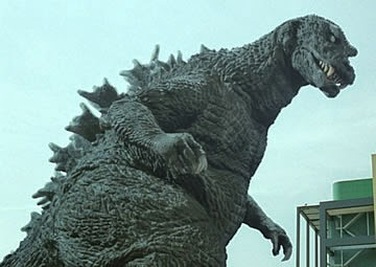 Meanwhile, a few teenagers at Lake Ikeda in Kagoshima are attacked by an insect monster, Mothra. The Defense Force analyzes underwater footage of what appears to be glowing dorsal fins leaving the destroyed nuclear submarine from before. The conclusion is drawn that the monster is Godzilla. Yuri interviews Hirotoshi Isayama, an elderly man who foretells the return of Godzilla. Isayama explains to her the legend of the guardian monsters, Baragon, Mothra, and King Ghidorah and goes on that they must be awakened before Godzilla destroys Japan. Yuri and her team visit the guardian monsters shrine where she finds a stone. Godzilla comes ashore to Magonote and attacks the Bonin Islands, leaving few survivors. Yuri returns to interview Isayama and discovers that the poor lost souls of World War II are embedded within Godzilla and wish to destroy Japan after the nation forgotten their sacrifices. A few days later, Godzilla and Baragon finally appear in Japan and engage in a ferocious battle in Hakone. Yuri and Takeda are trapped in the midst of the battle when Godzilla mercilessly defeats Baragon with his atomic breath. After the battle, Yuri receives a minor injury to the head. Fearing for her safety, Takeda refuses to take her to Godzilla's location. Angered, Yuri goes alone. Mothra's cocoon is soon immediately discovered in Lake Ikeda. The SDF dispatch several fighter jets to stop Godzilla but are quickly defeated by the monster. Tachibana sets up a defense line in Yokohama. Mothra and a yet-to-be-grown Ghidorah awaken and fly towards Yokohama where Godzilla is spotted. Mothra arrives first and battles the monster. Ghidorah arrives moments later and joins the fray. After brutally pinning down both monsters, the SDF engage Godzilla with D-03 missiles; but to no avail, as the missiles fail. Enraged, Godzilla swiftly destroys nearly the entire defense line using his atomic breath. Mothra rises for a surprise attack, but Godzilla kills her with his atomic breath. Mothra's spirit intertwines with Ghidorah and transforms him into the 3,000 year old dragon King Ghidorah. King Ghidorah injures Godzilla and takes the battle underwater. Tachibana and his colleague join the fight using the Satsuma submarine. Tachibana plans to shoots a D-03 into Godzilla's wound but fails after several attempts, even accidentally hitting King Ghidorah with one of the missiles. Yuri and Takeda report the struggle from a bridge that later collapses from Godzilla's atomic breath. Takeda and Yuri hold on; however, the shrine stone falls from Takeda's pockets and sink into the deep, melting on King Ghidorah's head. Ghidorah's power is strengthened up and takes the battle to the surface once more. Yuri and Takeda barely survive the fall and swim ashore while the monsters continue to fight. Godzilla destroys King Ghidorah with a super power breath and unleashes the spirits of the Guardian Monsters, which sink him down to the deep. After entering Godzilla's body through his mouth, Tachibana successfully plants a D-03 missile in Godzilla's wound. Godzilla surfaces to come face to face with Yuri and Takeda but the monster collapses when the missile explodes. Tachibana exits Godzilla's body through the monster's wound right before the monster disintegrates. Japan soon rejoices at their victory against Godzilla; however, the monster's heart continues to beat on the ocean floor. Cast
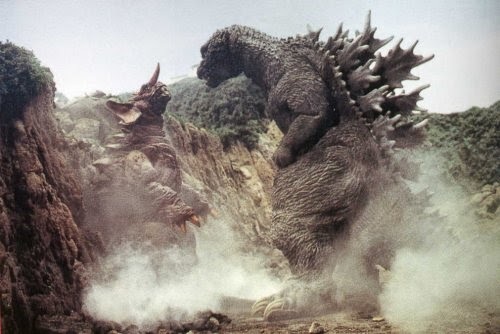 Production Director Shūsuke Kaneko's original script originally had Anguirus, Varan and Baragon defend Japan against Godzilla, but Toho told him to replace the former two with the more popular King Ghidorah and Mothra, as Anguirus and Varan were not considered bankable enough to guarantee a box-office hit. Skeptical at first, he managed to work the two monsters into the film. American fans were upset that Baragon was chosen to remain instead of Anguirus but the reason for this was that Baragon was popular in Japan despite only appearing in two kaiju films also distributed by Toho. The film is especially notable for the changes made to the monsters. For example, Ghidorah typically played the villain in previous Godzilla films; this film has him as a hero. In fact, Ghidorah is actually portrayed a few meters shorter than Godzilla; previous incarnations of the character were much larger, and towered over Godzilla. Originally, Godzilla was intended to walk with his back and tail parallel to the ground however, this idea was dropped due to the strain it put on Mizuho Yoshida (the actor playing Godzilla), and Godzilla retains his traditional posture. Mothra was also revamped. Like Ghidorah, Mothra is portrayed as being far smaller than normal and looking more like a Butterfly than a Moth. Her poison powder and hurricane wind attacks were removed, and were replaced with a burst of stingers fired from her abdomen. In addition, Mothra's fairy servants, the Shobijin, are dropped completely, (though a homage exists in the form of twins from Gamera 3: Awakening of Irys who look up in awe at Mothra as she flies overhead). Baragon was also altered. His heat ray was removed, his roar was changed and his horn is no longer bioluminescent. Apparently, the reason behind the changes to Ghidorah, Mothra, and Baragon were made in order to make Godzilla seem stronger. Director Kaneko wanted Godzilla to be the most powerful monster in the film. He originally wanted to use monsters who are notably smaller and less powerful than Godzilla, as his opponents. When advised by Toho to replace them, he compensated by making Ghidorah and Mothra weaker than they normally were. Fuyuki Shinada, who designed the monster suits for the film, was disappointed that Varan (his all-time favorite monster) wasn't going to be in the film, so he compromised by putting Varan's facial features on Ghidorah's three heads. In addition, the radioactive element has been replaced with a more mystical element. Godzilla has origins rooted in Japan's World War II past. Although Godzilla is still a mutant dinosaur created by the atomic bomb, he is also described as an incarnation of those killed or who were left to die at the hands of the Imperial Japanese Army during the Pacific War. The extent to which his nuclear and spiritual origins balance is never specified. Kaneko, a lifelong pacifist, did this to boost the anti-war angle of the original Godzilla. It was also because he knew that audiences wanted a realistic Godzilla, but there was no realistic way to explain a 60-meter mutant dinosaur, so he thought it worked better with a fantasy element. 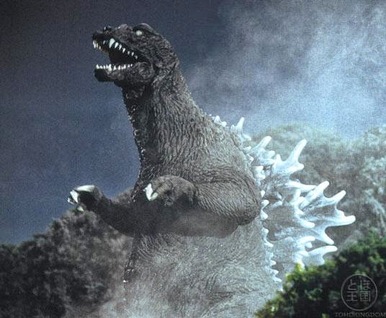 Box Office Produced with a budget of $9,400,000, Godzilla, Mothra and King Ghidorah: Giant Monsters All-Out Attack opened in Japan on December 15, 2001 on a double-bill with an animated film called Hamtaro: Ham Ham Big Land Adventure. In its opening weekend, it grossed approximately $1,900,000. By the end of its box office run, Godzilla, Mothra and King Ghidorah: Giant Monsters All-Out Attack grossed a total of approximately $20,000,000, with 2,400,000 admissions. It was the largest-grossing Godzilla film of the Millennium series in Japan. Reception Godzilla, Mothra and King Ghidorah: Giant Monsters All-Out Attack holds a 54% rating on Rotten Tomatoes, based on thirteen reviews. Troy Guinn of Eccentric Cinema gave the film a score of 8/10, calling it "one of only three Godzilla films I would recommend to anyone besides giant monster-movie fans or sci-fi buffs, the other two being the original Gojira and Mothra vs. Godzilla." Bryan Byun of DVD Verdict gave it a positive review, calling it "one of the most exciting entries in Godzilla's long cinematic history." Stomp Tokyo gave the film a score of 3/5, calling it "one of the better-looking entries in the series, albeit one of unfulfilled potential." John Wallis of DVD Talk felt that "the story is quite weak and somber" and that "this new take on [Godzilla] doesn't really work," while Gemma Tarlach of the Milwaukee Journal said that "GMK is best when it embraces its unabashed cheesiness. But when it tries to make Statements with Meaning, whether on Japan's past aggressions or ersatz samurai ruminations on the duty of a warrior, the movie flounders like a giant lizard hogtied by power lines." Film critic Leonard Maltin gave it three out of four stars, one of only two Godzilla films to receive more than two and a half stars, with the other being Godzilla 2000. 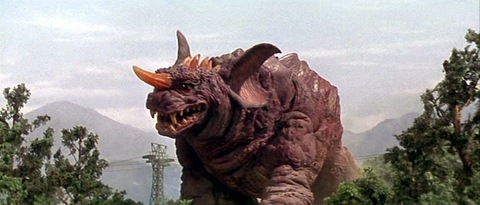 English Version After the film was completed, Toho had their international versions of the movie dubbed in Hong Kong. This dubbed version significantly changes the meaning of several lines throughout the film. Sony licensed GMK and Godzilla vs. Megaguirus with the hope of giving both films a theatrical release in the United States. Sony's release of Godzilla 2000 proved that traditional Godzilla films failed to attract huge crowds of moviegoers, so plans to give any newer Godzilla films a wide release were scrapped. Instead, Sony prepared edited television versions of both films. These premiered in the United States on the Sci-Fi Channel on August 31, 2003, during the channel's Labor Day marathon. In February 2004, the uncut international versions of both films were released on DVD with the addition of the original Japanese soundtracks (a first in the US). DVD Sony Pictures Released: January 27, 2004 Awards In 2002, the film won the Best Grossing Films Award - Silver Award.
0 Comments
Leave a Reply. |
Release Dates
November 2023
|
|
© 2011-2024 Kaiju Battle. All Rights Reserved.
|
Visit Our Social Media Sites
|
Proudly powered by Weebly
|
- Home
- Features
- Movies/Media
- Collectibles
- Comics/Books
-
Databases
-
Figure Database
>
-
X-Plus Toho/Daiei/Other
>
- X-Plus 30 cm Godzilla/Toho Part One
- X-Plus 30 cm Godzilla/Toho Part Two
- X-Plus Large Monster Series Godzilla/Toho Part One
- X-Plus Large Monster Series Godzilla/Toho Part Two
- X-Plus Godzilla/Toho Pre-2007
- X-Plus Godzilla/Toho Gigantic Series
- X-Plus Daiei/Pacific Rim/Other
- X-Plus Daiei/Other Pre-2009
- X-Plus Toho/Daiei DefoReal/More Part One
- X-Plus Toho/Daiei DefoReal/More Part Two
- X-Plus Godzilla/Toho Other Figure Lines
- X-Plus Classic Creatures & More
- Star Ace/X-Plus Classic Creatures & More
-
X-Plus Ultraman
>
- X-Plus Ultraman Pre-2012 Part One
- X-Plus Ultraman Pre-2012 Part Two
- X-Plus Ultraman 2012 - 2013
- X-Plus Ultraman 2014 - 2015
- X-Plus Ultraman 2016 - 2017
- X-Plus Ultraman 2018 - 2019
- X-Plus Ultraman 2020 - 2021
- X-Plus Ultraman 2022 - 2023
- X-Plus Ultraman Gigantics/DefoReals
- X-Plus Ultraman RMC
- X-Plus Ultraman RMC Plus
- X-Plus Ultraman Other Figure Lines
- X-Plus Tokusatsu
- Bandai/Tamashii >
- Banpresto
- NECA >
- Medicom Toys >
- Kaiyodo/Revoltech
- Diamond Select Toys
- Funko/Jakks/Others
- Playmates Toys
- Art Spirits
- Mezco Toyz
-
X-Plus Toho/Daiei/Other
>
- Movie Database >
- Comic/Book Database >
-
Figure Database
>
- Marketplace
- Kaiju Addicts
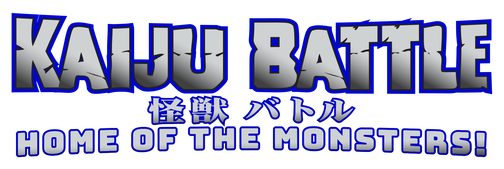
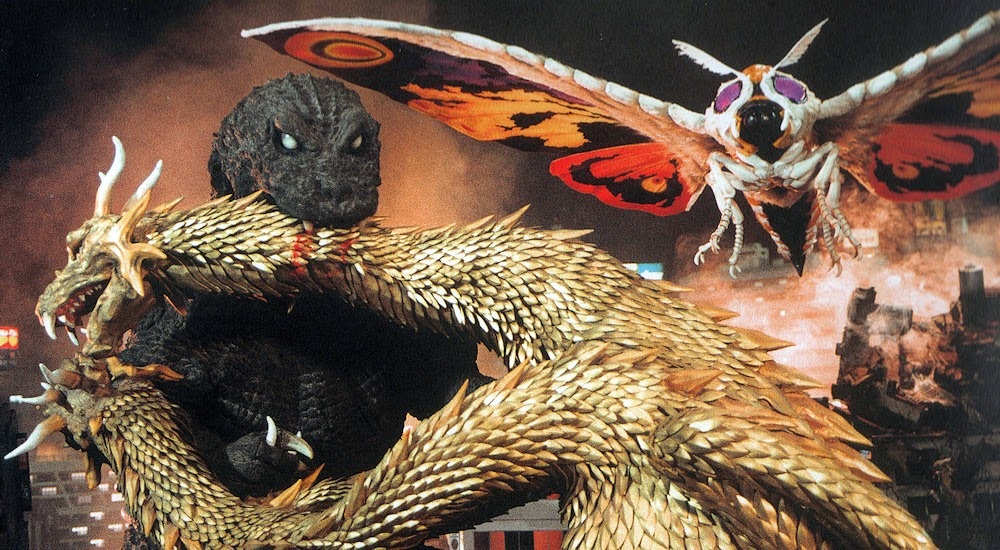
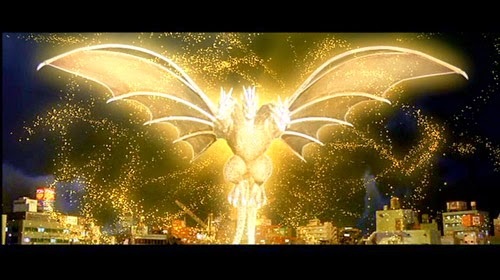
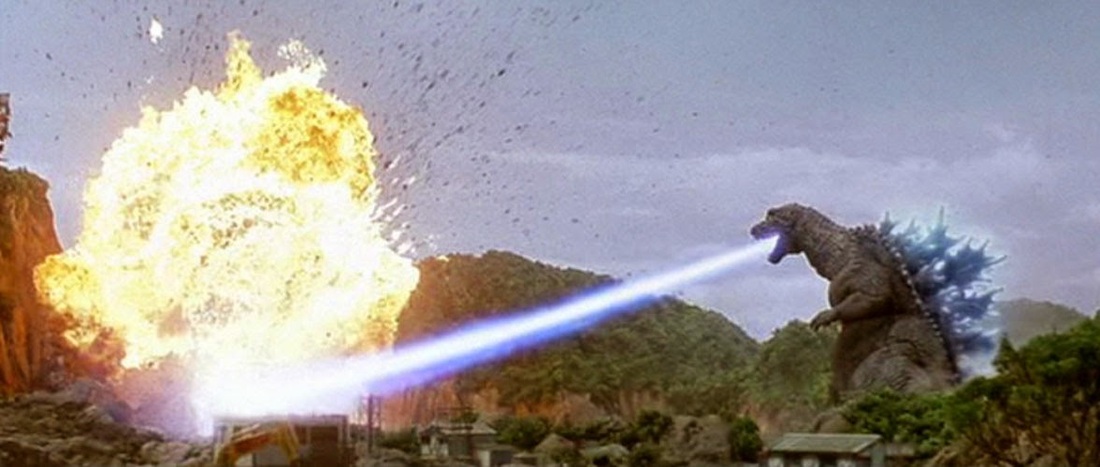
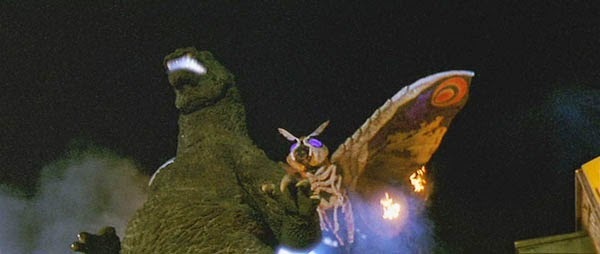
 RSS Feed
RSS Feed